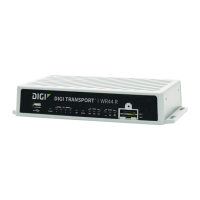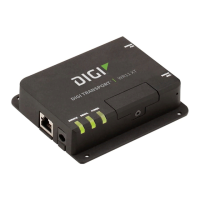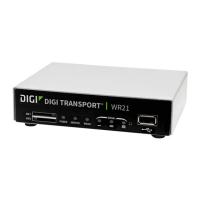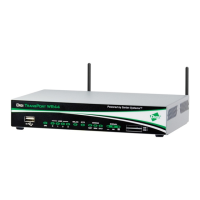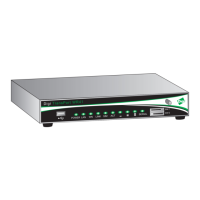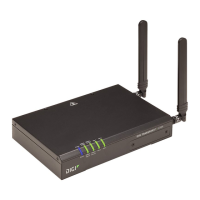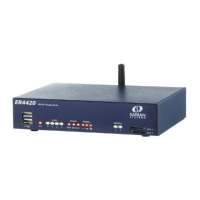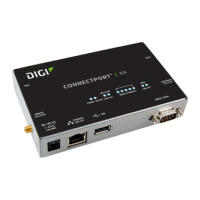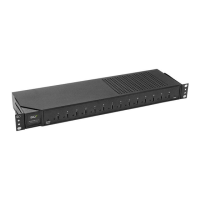Configure Systems Network Architecture over IP (SNAIP)
Digi TransPort User Guide 501
Configure SNAIP parameters
SNA is configured on Configuration > Network > Legacy Protocols > SNAIP. Parameters are as
follows:
Description
A name for this SNAIP instance, to make it easier to identify.
Send SNAIP traffic over interface
The physical interface used for carrying SNAIP data. This can be set to either ISDN, Serial Port,
or SharedPort.
•If ISDN is selected, SNAIP data is carried over the ISDN BRI physical interface.
•If Serial Port is selected, SNAIP data can be routed to either serial Port 0 or serial Port 1
(operating in synchronous mode). To configure Port 0 or Port 1 for synchronous operation
go to Configuration > Network > Interfaces > Serial > Serial Port x > Sync Port x.
•If Shared Port is selected, the drop down list next to Shared Port specifies the SNAIP
instance that has sync port configured. When sync port sharing is enabled only one SNAIP
instance can currently own the sync port. Other SNAIP instances however can share this
sync port in the event that there is more than one terminal residing on a multi-drop sync
line. In this situation with multiple terminals, each terminal station will operate a DLSw
state independently of all other stations.
The SNAIP parameter Priority is used to select the SNAIP instance to use when more than one
is available; the highest number being given preference.
For example, consider that 4 SNAIP instances to all share sync port 0. To do this, configure
SNAIP 0 in the usual way on PORT 0, then configure SNAIP instances 1, 2, and 3 to use
SharedPort and Sync Port from SNAIP 0.
Use protocol
The protocol for the interface. Choose LAPB, SNA for SDLC or RAW for raw mode in which all
L2 frames are transmitted and received. You can also choose RAW_NOHDR for raw mode with
no DLSw headers.
Allow this unit to answer calls
This setting is only relevant when the interface is set to ISDN. If this parameter is set to On, the
router answers incoming calls on the relevant LAPB session. To prevent the router from
answering incoming calls on this LAPB session set the option to Off.
Only accept calls with MSN ending with
This setting is only relevant when the interface is set to ISDN. This is the filter for the ISDN
Multiple Subscriber Numbering facility. By default, this setting is blank. When set to an
appropriate value with answering calls parameter above enabled, the router to answer
incoming calls only to ISDN numbers where the trailing digits of the called number match the
MSN value. For example, setting the MSN parameter to 123 prevents the router from
answering any calls to numbers that do not end in 123.
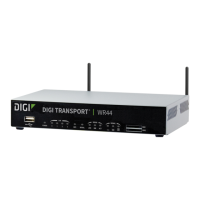
